Europeana for Genealogy: WWI Digital Archive, Newspapers and More
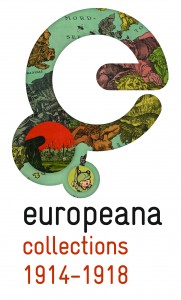 Europeana is a digital doorway to European cultural heritage that everyone with European roots will find interesting and enlightening.
Europeana is a digital doorway to European cultural heritage that everyone with European roots will find interesting and enlightening.
Funded by the European Commission and Ministries of Culture in 21 member states, the Europeana website is home to nearly: 19 million images; 13 million texts (including books, archival papers and newspapers); half a million each sound and video files and 16,000 3-D models of objects.
Europeana’s World War I Digital Archive
A major part of Europeana is its World War I digital archive. As the site describes, Europeana “has been running World War I family history roadshows around Europe, helping to digitize people’s stories, documents and memorabilia from 1914-1918. People can upload their own digitized items onto the Europeana1914-1918.eu site. In 2014, the centenary of WWI, 100,000 images and scans have already come into Europeana, creating a virtual memory bank that reflects all perspectives on the conflict.”
Europeana 1989 and the Fall of the Iron Curtain
A sister site, Europeana 1989, collects “stories, pictures, films relating to the events of 1989 in Central and Eastern Europe.” You can upload your own materials or, as the site says, “let us take you on a journey through the Fall of the Iron Curtain, see it from all sides and draw your own conclusions.”
The top countries to supply images to Europeana are Germany, France and the Netherlands, each with more than 3.5 million items, and then Spain, Sweden, Italy and the U.K. The site attracted 4 million unique visitors last year. Click here to read a guide to using Europeana for genealogy and local history research.
Historical Newspapers at Europeana
Historical newspapers are another great source for genealogical and historical research. Europeana now includes the Europeana Newspapers collection which features hundreds of newspaper titles and millions of newspaper pages, spanning four centuries and 20 countries from across Europe. In addition to viewing digitized newspaper pages, many now support readable text files. These files allow you to keyword search within their contents. You can zero in on these files by using feature called ‘Search for records with full text’.
Europeana’s Newspaper Collection offers a variety of ways to access and use the content including:
- browsing curated lists of the top newspaper titles from A-Z
- browsing by country of origin
- searchig the full text of newspapers
- searching only in the metadata
- searching for newspapers in a date range or on a specific date
- reading blogs on Newspaper-related themes
- downloading
It’s worth investing a few minutes in reviewing the historical newspapers guides at Europeana In order to get the most from the collection. The helpful guides explain how to navigate, search, find, and reuse Newspapers content.
More at Europeana
Other Europeana links to try:
- The Europeana portal is the search engine for the digitised collections of museums, libraries, archives and galleries across Europe.
- Our Virtual Exhibitions feature highlights from the collection.
- Follow the Europeana blog to keep updated on the projects and progress of this rapidly-growing resource for European family history.
New Online International Records Online
Here are the latest genealogy records newly online from Findmypast. You’ll find a large selection from Scotland, and others from around the world.
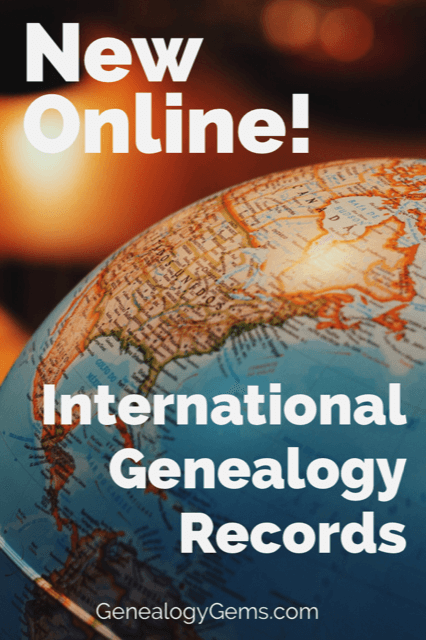
Scotland, Published Family Histories
Is your family from Scotland? Discover more about your Scottish families’ name and history from this collection of publications. There are over 400 publications in this collection of Scottish family histories.
The publications mostly date from the 19th and early 20th centuries, they include memoirs, genealogies, and clan histories. There are also publications that have been produced by emigrant families.
Scotland, Newspaper Birth Notices
Over 121,000 new records have been added to our collection of Scottish newspaper birth notices. These new additions have been transcribed from our existing collection of Scottish newspapers.
Each record includes a transcript and an image of the original newspaper announcement. The amount of information listed varies, but most records will list a combination of your ancestor’s birth date, birth place and parents’ names.
Scotland, Newspaper Marriage & Anniversary Notices
A further 201,000 new records have also been added to our notices of marriages and anniversaries.
Also taken from our existing collection of historical newspapers, the records will include a combination of your ancestor’s marriage date, marriage place, spouse’s name and parents’ names. Images of the original notices may reveal additional details.
Scotland, Newspaper Death Reports & Obituaries
Over 500,000 additional records are now available to search. This collection of newspaper death reports and obituaries may reveal interesting or undiscovered stories surrounding your ancestors’ life and death.
Transcripts will reveal your ancestor’s death date, age at death, parents’ names and the name of their spouse.
Scotland, Glasgow & Lanarkshire Death & Burial Index
Over 37,000 records have been added to the Glasgow & Lanarkshire Death & Burial Index. These new additions cover Bent Cemetery in Hamilton and consist of transcripts of original documents that will reveal a combination of your ancestors’ birth year, death and burial dates, age at death, burial place and mortcloth price.
Scotland, Court & Criminal Database
Over 28,000 records from the Fife Kalendar of Convicts have been added to our collection of Scottish crime records.
The result of a 20 year project by Andrew Campbell of the Fife Family History Society, the Kalendar is an indexing to many of the courts in Fife as well as the High Court between 1708 and 1909. It includes information taken from a variety of sources ranging from court, prison and transportation records to births, marriages, deaths and newspaper reports.
Each result will include a transcript of the original document. The amount of information listed in each transcript will vary, but most will reveal a combination of the accused’s name, birth year, birth place, address and occupation, the nature of their offence, the date and location of their trail as well as the sentence they received.
Some records will also include trial notes, verdict comments, details of previous convictions and additional comments.
The Scotland, Court & Criminal Database now contains over 160,000 including Crown Office Precognitions and High Court Trial Papers. Crown Office Precognitions are factual statements that have been given by witnesses to both the prosecution and defence before the case goes to trial. Precognitions differ from a witness statement, a witness statement is an account of what the witness has said or seen were as a precognition is an account of the witness’s evidence.
Church of Scotland Ministers 1560-1949
Explore PDF images of the “The Succession of Ministers on the Church of Scotland from the Reformation”. Compiled by Hew Scott, D.D., The work was revised and continued up to 1949 under the Superintendence of a Committee appointed by the General Assembly.
As quoted in the book, “the design of the present work is to present a comprehensive account of the Succession of Ministers of the Church of Scotland since the period of the Reformation. An attempt is made to give some additional interest by furnishing incidental notices of their lives, writings and families, which may prove useful to the Biographer, the Genealogist, and the Historian.”
Isle of Man Roll Of Honour WW1
Find your Isle of Man ancestors who fell in the Great War. The Isle Of Man Roll Of Honour recorded the names of more than 1,900 men who died during the First World War or died as a result of wounds, injury or disease contracted on active service. These transcripts will reveal your ancestor’s rank, regiment, parish and biography.
Originally published in 1934 by the War Pensions Committee, the publication was funded entirely by Lord Stanley, Earl of Derby.
In 1936, the War Pensions Committee donated copies to each parish church throughout the island.
The foreword, provided by Lord Stanley, reads ‘It is well that the deeds of those who died in the Great War should find a permanent memorial in such a list. Whilst this generation lives their names will not be forgotten, but other generations will arise to whom they will not be personally known. This Roll will serve to keep their memory green and future Manxmen and Manxwomen, when reading it, will realise that in our great struggle the Isle of Man played a noble part’.
International Records Update – Czech Republic
Two new Indexes, Czech Republic Births & Baptisms 1637-1889 and Czech Republic Marriages 1654-1889 are now available to search. These transcripts will provide you with vital dates and locations as well as the names of parents and spouses. Hints will also be generated from these records against any matching names stored in your Findmypast family tree.
International Records Update – Belgium
Celebrate Belgian Independence Day this coming Sunday by discovering your Belgian roots. Explore two indexes, Belgium Marriages 1563-1890 and Belgium Deaths & Burials 1564-1900, containing more than 212,000 records.
These records will enable you to determine when your ancestors died, where they were laid to rest, when they married and the name of their spouse.
International records update – Finland
Search for your Finnish ancestors in three indexes of more than six million baptisms, marriages and burials between 1657 and 1909. These transcripts will also generate hints against any names stored in your Findmypast Family Tree.
Pinpoint your ancestor’s final resting place with new additions to our Billion Graves Cemetery Indexes. Our latest update includes:
- Over 214,000 new additions to the Canada Billion Graves Cemetery Index
- Over 323,000 new additions to the Australia Graves Cemetery Index
- Over 71,000 new additions to the New Zealand Billion Graves Cemetery Index
Cemetery records are of great importance in discovering where and when your ancestor died. They can also provide you with information regarding their birth and marriage dates.
With an abundance of cemeteries, it can be overwhelming trying to pinpoint the precise cemetery in which your ancestor was laid to rest, and visiting each potential location is costly. However, in partnering with BillionGraves, we aim to make available all the cemetery records held on their site for free, saving you time and money as you search for your ancestor. BillionGraves is the largest resource for GPS-tagged headstone and burial records on the web, with over 12 million headstone records.
International Records Update – Netherlands
Unearth your Dutch roots with three indexes to more than three million births & baptisms, marriages, deaths and burials that took place in the Netherlands between 1564 and 1945.
These transcripts were sourced from the International Genealogical Index and will generate hints against your Findmypast family tree.
Disclosure: This article contains affiliate links and Genealogy Gems will be compensated if you make a purchase after clicking on these links (at no additional cost to you). Thank you for supporting Genealogy Gems!
WPA Records for Genealogy: Historical Record Surveys, Local Histories and More
Have you used WPA records for genealogy? Their Historical Record Surveys and local and oral histories may help you in your family history research. Existing records and locations vary widely. Here are tips to help you in your search.
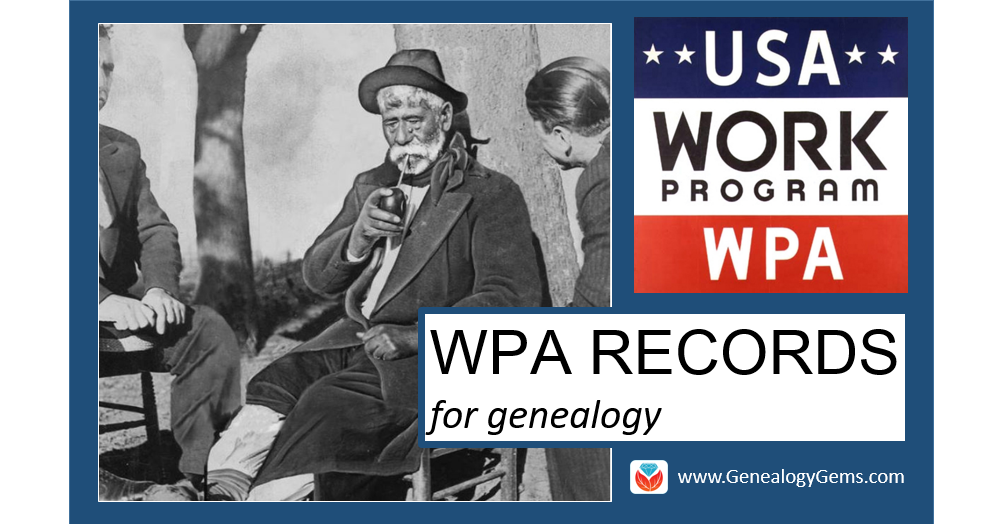
In the late 1930s and early 1940s, employees of the Works Progress Administration (WPA, also known as the Works Projects Administration) created new resources for U.S. genealogical research. It’s possible you’ve even consulted some of these without being aware of their WPA origins. After all, the projects and their formats varied. They didn’t always prominently credit the WPA and some were printed long afterward. We’re going to shine the spotlight on WPA-era local histories, oral histories and statewide Historical Record Surveys.
WPA Records for Genealogy: Local Histories
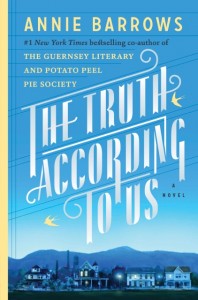 In Annie Barrows’ novel The Truth According to Us, Layla Beck heads to the small fictional town of Macedonia, West Virginia to write a local history as a WPA assignment. Drama ensues, both in Layla’s personal life and as she tries to learn local stories, which everyone reports a little differently. (We featured this book in the Genealogy Gems Book Club.)
In Annie Barrows’ novel The Truth According to Us, Layla Beck heads to the small fictional town of Macedonia, West Virginia to write a local history as a WPA assignment. Drama ensues, both in Layla’s personal life and as she tries to learn local stories, which everyone reports a little differently. (We featured this book in the Genealogy Gems Book Club.)
Actually, local histories were written as WPA projects. Their scope, topics, and formats varied, depending on the unique background and resources of each region and how active WPA workers were in each state and county. For example, WPA historical materials in Morrison County, Minnesota include “histories on townships, cities, churches, schools, businesses, the military, and miscellaneous county history topics,” which have since been collected and reprinted by the county historical society. Many historical projects included photographs, such as this one for the city of New Orleans.
WPA Records for Genealogy: Oral Histories
WPA workers also captured oral histories of individuals, too. Many were collected in American Life Histories: Manuscripts from the Federal Writers’ Project, 1936 to 1940, now online at the Library of Congress. According to the collection description, “The documents chronicle vivid life stories of Americans who lived at the turn of the century and include tales of meeting Billy the Kid, surviving the 1871 Chicago fire, pioneer journeys out West, factory work, and the immigrant experience. The documents often describe the informant’s physical appearance, family, education, income, occupation, political views, religion and mores.”
Other important WPA oral histories are narratives of former slaves and their families. You can browse an enormous collection of these online at the Library of Congress. These aren’t the ideal eyewitness accounts we wish for, as they were gathered so long after the end of slavery, from many who were young children at the time. Also, many researchers believe interviewees may not have spoken candidly, especially to white interviewers who may have known them personally.
It’s a long shot to find an ancestor mentioned by name in WPA oral histories. In some instances, pseudonyms were even used for names and places. But, you can still learn a lot from others’ descriptions of daily life and unusual events your ancestors may have experienced.
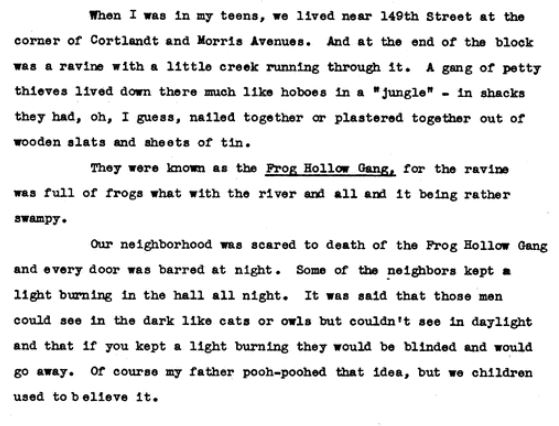
From one of the slave narratives mentioned in this article.
Historical Record Surveys
The Historical Record Surveys created by the WPA are among the most genealogically-valuable of their projects. “Under the auspices of the WPA, workers went to archives, historical societies, public and university libraries, and compiled inventories of manuscript collections,” writes Bryan Mulcahy in an online report. “They went to courthouses, town halls, offices in large cities, and vital statistics offices and inventoried records. Besides compiling indexes, they also transcribed some of the records they found.”
Today, many of their efforts still exist. They include indexes to cemeteries, newspapers, and naturalization records, as well as inventories of courthouse records, church records, and other manuscript collections in various archives or libraries. Of course, some records may have been moved or destroyed since inventories were created, but knowing what records existed around 1940 and what they were called may help you locate surviving collections. Some indexes, such as those of cemetery tombstone inscriptions, may actually be more valuable since they captured information from tombstones that may no longer exist or be legible.
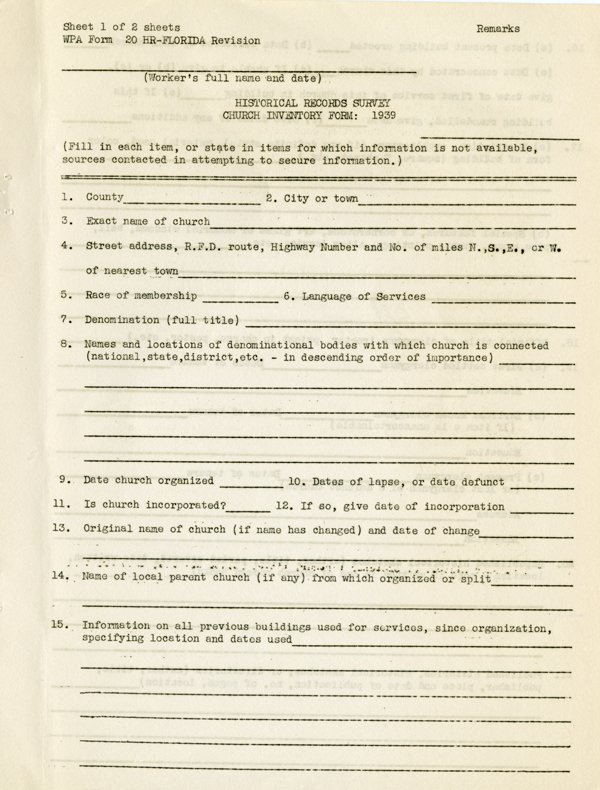
A blank WPA Historical Records Survey church records inventory form. Image courtesy of the State Archives of Florida. Click this image to find it online at Florida Memory.
One great example is the Historical Records Survey for the state of Oregon, described as “the most comprehensive documentary project of Oregon history and related records of its time.” It includes historical essays, document transcriptions, interviews, research notes, photographs, pamphlets and more. According to its collection description, “The territorial and pioneer periods of the mid-to-late nineteenth century receive the greatest attention, with an emphasis on the growth of state government and infrastructure, business and agriculture, transportation, education, biography, and relations between social groups. Native Americans figure prominently in this collection.”
Finding WPA Records for Genealogy Online
Some WPA projects were carried out on a federal level and others by state agencies. They were never centrally published or collected. Today, surviving original files and published volumes are scattered across the country. Some can be found in the National Archives, many in state libraries or societies, and many more available at local repositories.
A Google search such as historical records surveys and the name of the state and/or county is a great way to start your search for WPA records for genealogy research. Some results will lead right to the kinds of resources you want, such as this guide to WPA records in archives in the Pacific Northwest. Others, such as this one for the Iowa Historical Records Survey published in The American Archivist, are mostly a history of the effort. However, they do contain several useful bibliographic citations to records that were created. Add the name of the county to your search and you may find more targeted results, such as this library catalog entry for the inventory of the Jasper County archives. Click here to learn more about Google searches for genealogy records you want to find.
Remember, though, that many WPA publications and collections aren’t identified as such. Don’t fixate on needing to find WPA listed in the title. Just concentrate your efforts on finding the local and oral histories, photos, historical record indexes and inventories, and other resources that may be out there. When you find one created during the Great Depression, you’ll know it may have been done by the WPA.
 Love what you’re reading and want to learn more? Go deeper into genealogy “gems” like these in Lisa Louise Cooke’s Genealogy Gems Podcasts. Lisa produces a free internationally-renowned monthly podcast that’s had over 2.5 million downloads! Additionally, Genealogy Gems Premium website members also have access to her full archive of monthly Premium podcast epidodes: check out a full description of these here including Episode 2 on WPA records for genealogy.
Love what you’re reading and want to learn more? Go deeper into genealogy “gems” like these in Lisa Louise Cooke’s Genealogy Gems Podcasts. Lisa produces a free internationally-renowned monthly podcast that’s had over 2.5 million downloads! Additionally, Genealogy Gems Premium website members also have access to her full archive of monthly Premium podcast epidodes: check out a full description of these here including Episode 2 on WPA records for genealogy.
The Royal Irish Constabulary Records in New and Updated Genealogical Collections
New and updated genealogical collections for the Royal Irish Constabulary are just the tip of the iceberg this week. Scroll down for more cool finds for New South Wales, Scotland, U.S. marriages, and an update to the Freedmen’s Bureau collections at FamilySearch.

Ireland – Royal Irish Constabulary Records
You can now search the Ireland, Royal Irish Constabulary Service Records 1816-1922 at Findmypast for over 486,000 records that uncover the details of your ancestor’s career with the R.I.C.
Each search result includes an image of the original document and a transcript. The nature of the information recorded will vary significantly depending on the subject and type of the original document. The following is a list of what types of records can be found in this collection:
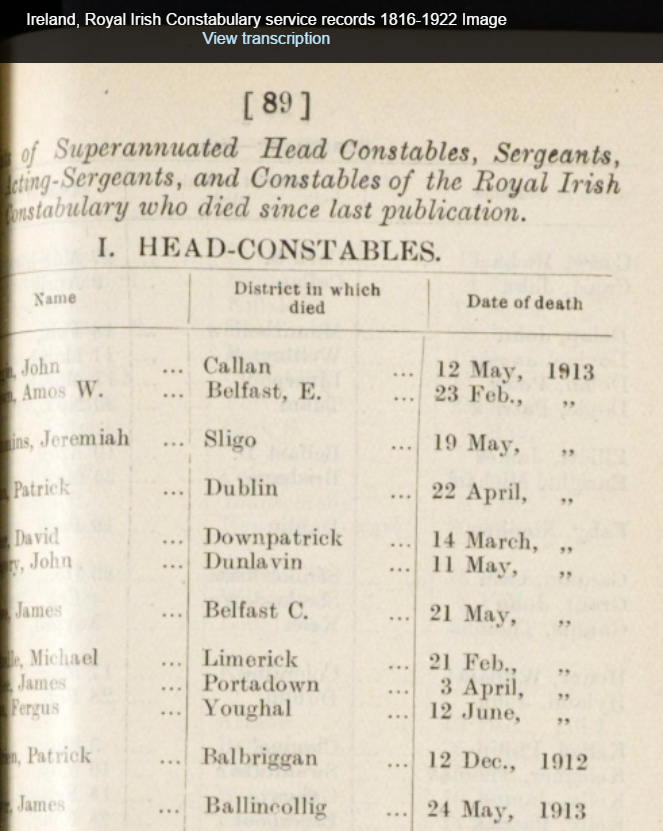
Auxiliary division general registers: These are nominal rolls that recorded member’s service number, rank, dispersed date, and company name. The registers also include division journals that recorded dates of appointment, promotions, and medical details.
Clerical staff: record of service and salaries: These lists of clerical staff include birth date, age at appointment, rank, department and salary.
Constabulary Force Funds: These correspondence registers are of members who paid into the fund with notes on whether they had been pensioned, died or received any rewards from the fund.
Constabulary lists: These are lists of chief constables created during the first year of the Royal Irish Constabulary.
Disbandment registers: These registers are of serving members who were with the force in 1922 when it disbanded after the creation of the Free Irish State. They also noted the number of years the constable served and their recommended pension.
General registers: Records of constables’ service history are contained in these general registers. The entries include the individual’s birth date, native county, religion, previous occupation, date of appointment, and promotions, as well as any rewards or punishments received and the date of pension or discharge.
Nominal returns, arranged by counties: Nominal returns are lists of all serving members of the Royal Irish Constabulary organised by county that recorded the individual’s number, rank, name, religion, date of appointment, marital status, and station location.
Officers’ registers: These registers are lists of Officers that include transfers and dates, favorable and unfavorable records, dates of promotions and details of previous military service.
Pensions and gratuities: Pension records reveal the constable’s rate of pay and the amount of pension calculated.
Recruits index: Lists of new recruits, their dates of appointment and arrival, and their company can be found in the recruits index.
Also at Findmypast, Ireland, Royal Irish Constabulary History & Directories has had a significant addition of over 43,000 records. You will be able to explore a variety of publications between the years of 1840 and 1921. These records will provide insight into the administration and daily operations of the police force.
Each record includes a PDF image of the original publication. The collection includes training manuals, codes of conduct, salary scales, circulars and staff lists that cover promotions, deployments, and rules & regulations.
Ireland – Valuation Books
At FamilySearch, the Ireland, Valuation Office Books, 1831-1856 are now available to search. These records are the original notebooks that were used when the property valuations were conducted between the years of 1831-1856. They are arranged by county, then alphabetically by parish or townland.
Land valuation records may contain the following information:
- Land occupier’s name
- Location, description, and monetary valuation of each land plot surveyed
New South Wales – Passenger Lists
The New South Wales Passenger Lists is a collection at Findmypast that contains over 8.5 million records. The collection includes records of both assisted and unassisted passengers. The assisted passenger lists cover 1828 to 1896 and the unassisted passenger lists span the years 1826 to 1900. Assisted passengers refers to those who received monetary assistance from another party or agency/government for their passage.
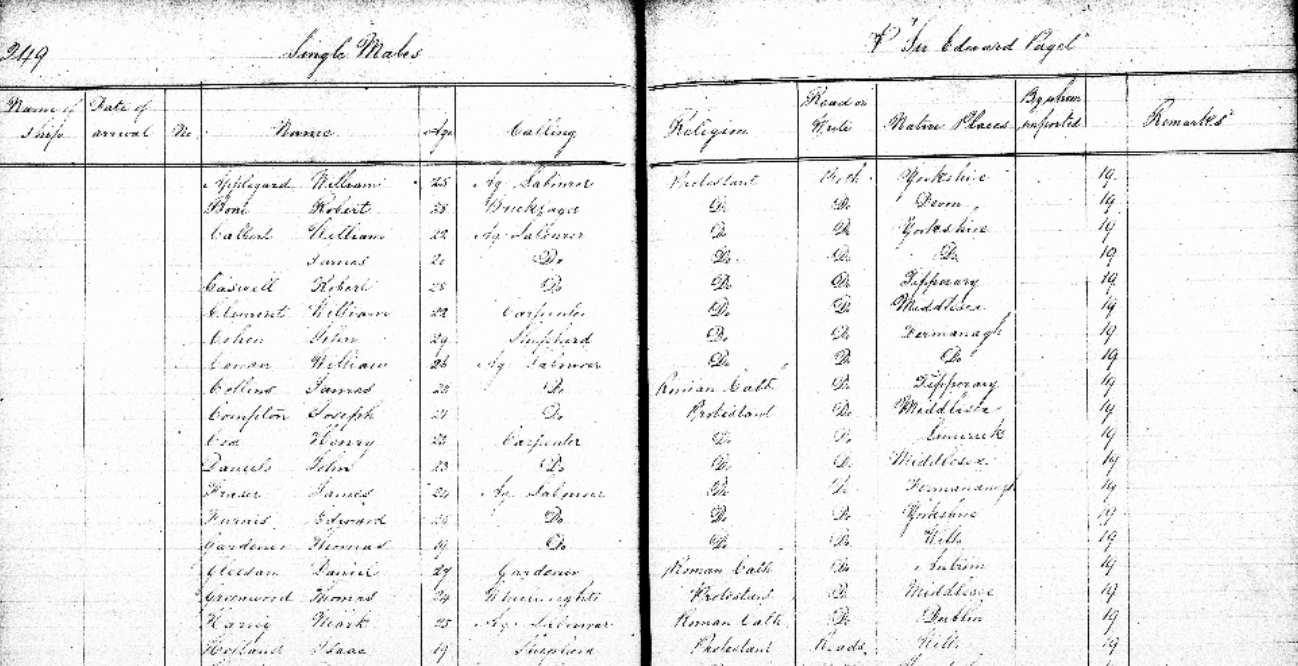
Each result will provide a transcript and image of the original record. The information included on the transcript will vary depending on whether your ancestor was an assisted or unassisted passenger, although most will include your ancestors name, passage type, birth year, nationality, departure port, arrival port and the dates of their travels.
Scotland – Parish Records
The Scotland Non-Old Parish Registers Vital Records 1647-1875 found at Findmypast is a collection of registers created by churches outside of the established church. It contains over 12,000 transcripts of births, marriages, and deaths.
Non-old parish registers are different from the Church of Scotland’s old parish records.
Though these are only transcripts and do not include a digital image of the original, you may find the following information on the records included in this collection:
With each result you will be provided with a transcript of the details found in the original source material. The detail in each transcript can vary depending on the event type and the amount of information that was recorded at the time of the event. Here are some of the facts you may find in the records:
- Name
- Birth year, date, and place
- Event year
- Event type – birth, marriage, or death
- Register name
- Parish and county
United States – Freedmen’s Bureau Records
FamilySearch has updated their magnificent collection of United States Freedmen’s Bureau, Records of Freedmen, 1865-1872. Records found in this collection include census returns, registers, and lists of freedmen. They also include letters and endorsements, account books, applications for rations, and much more. Many of the records will hold valuable genealogical data.
For a complete list and coverage table of the full collection, click here.
United States – Marriages – Oregon and Utah
Ancestry.com has recently updated two marriage collections. The Oregon, County Marriages, 1851-1975 and the Weber and Piute Counties, Utah, County Marriages, 1887-1940 have some new records. Marriage records will often provide many helpful genealogical details. Depending on the year, you may find:
- Name of the groom and bride
- Date and place of the event
- Birth dates and places of bride and groom
- Names of parents of both bride and groom
- How many previous marriages and marital status
- Place of residence of bride and groom
United States – Washington – Newspapers
Washington State historic newspapers added to their digital collection of newspapers this week. With nearly 50,000 digitized pages from historical newspapers based in Centralia, Eatonville, Tacoma, and Spokane newest titles include the Centralia Daily Hub (1914-16), The Eatonville Dispatch (1916-61) and Den Danske Kronike (1916-17), a Danish-English publication based in Spokane.
The Centralia and Eatonville papers were added this month and Den Danske Kronike was added last summer, along with the Tacoma Evening Telegraph (1886-87).
You will be able to search this newspaper collection for free from the Washington State Library website.
